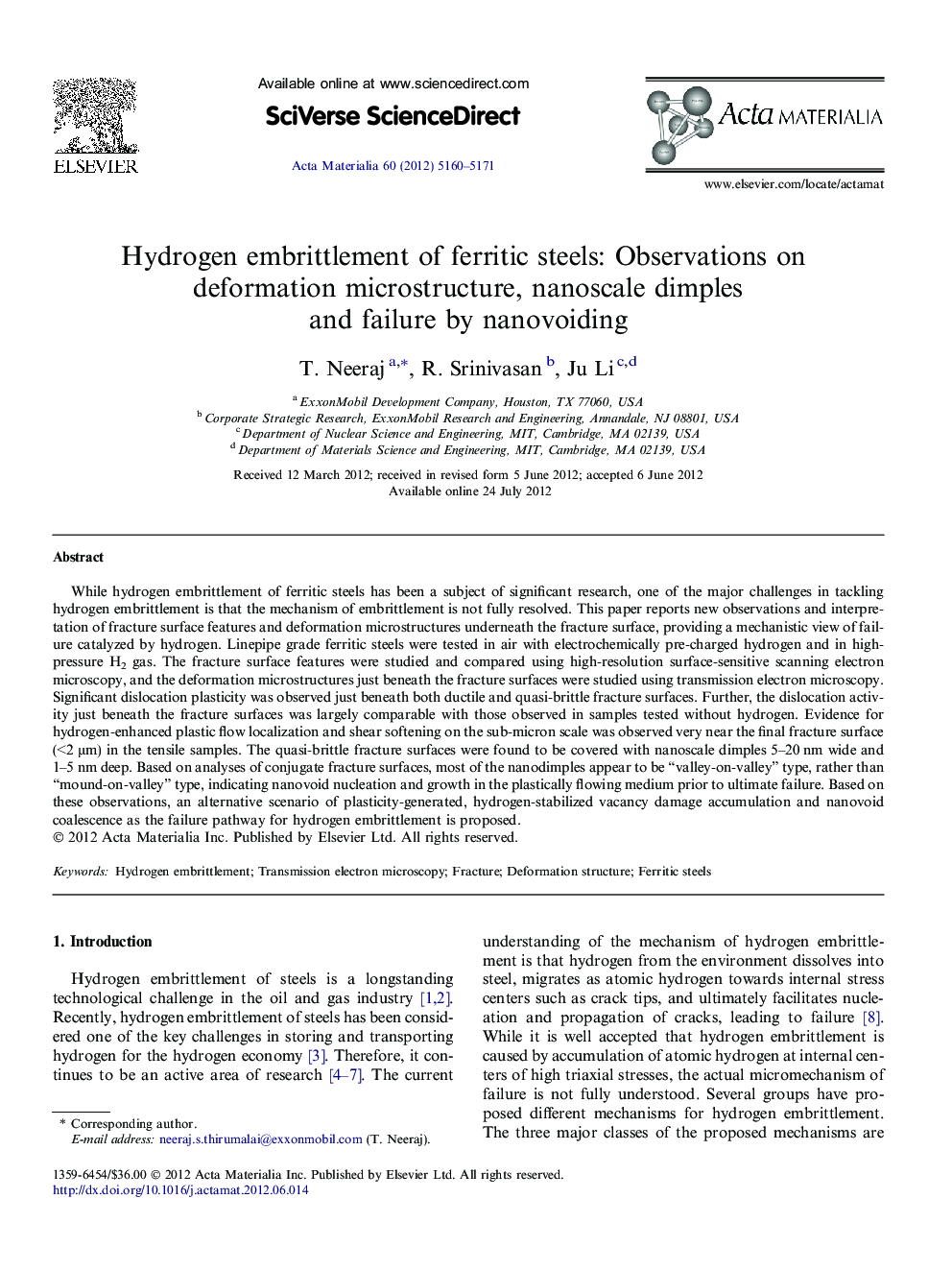| کد مقاله | کد نشریه | سال انتشار | مقاله انگلیسی | نسخه تمام متن |
|---|---|---|---|---|
| 1446778 | 1509616 | 2012 | 12 صفحه PDF | دانلود رایگان |

While hydrogen embrittlement of ferritic steels has been a subject of significant research, one of the major challenges in tackling hydrogen embrittlement is that the mechanism of embrittlement is not fully resolved. This paper reports new observations and interpretation of fracture surface features and deformation microstructures underneath the fracture surface, providing a mechanistic view of failure catalyzed by hydrogen. Linepipe grade ferritic steels were tested in air with electrochemically pre-charged hydrogen and in high-pressure H2 gas. The fracture surface features were studied and compared using high-resolution surface-sensitive scanning electron microscopy, and the deformation microstructures just beneath the fracture surfaces were studied using transmission electron microscopy. Significant dislocation plasticity was observed just beneath both ductile and quasi-brittle fracture surfaces. Further, the dislocation activity just beneath the fracture surfaces was largely comparable with those observed in samples tested without hydrogen. Evidence for hydrogen-enhanced plastic flow localization and shear softening on the sub-micron scale was observed very near the final fracture surface (<2 μm) in the tensile samples. The quasi-brittle fracture surfaces were found to be covered with nanoscale dimples 5–20 nm wide and 1–5 nm deep. Based on analyses of conjugate fracture surfaces, most of the nanodimples appear to be “valley-on-valley” type, rather than “mound-on-valley” type, indicating nanovoid nucleation and growth in the plastically flowing medium prior to ultimate failure. Based on these observations, an alternative scenario of plasticity-generated, hydrogen-stabilized vacancy damage accumulation and nanovoid coalescence as the failure pathway for hydrogen embrittlement is proposed.
Journal: Acta Materialia - Volume 60, Issues 13–14, August 2012, Pages 5160–5171